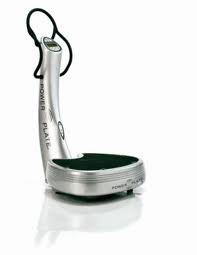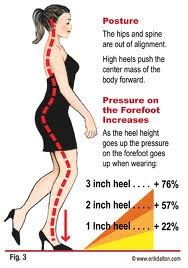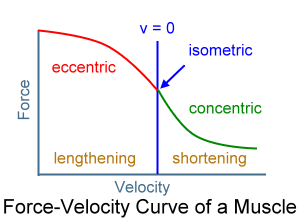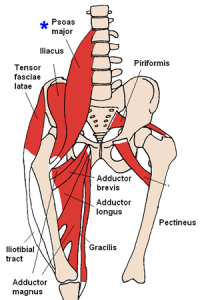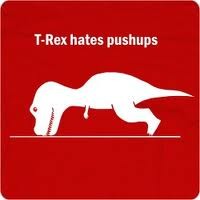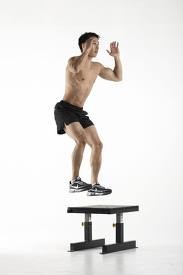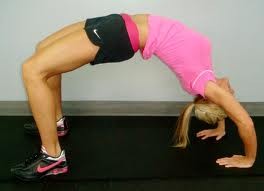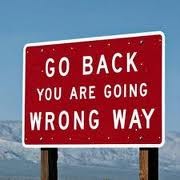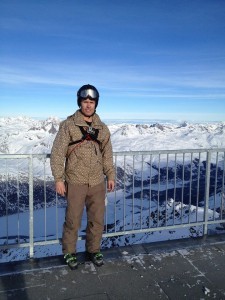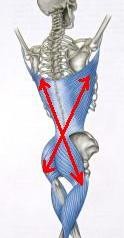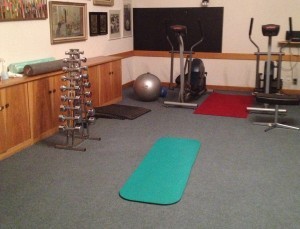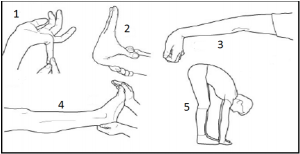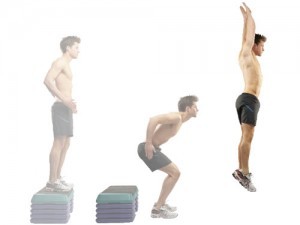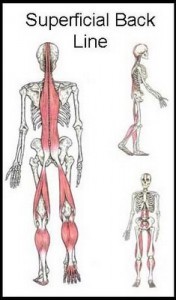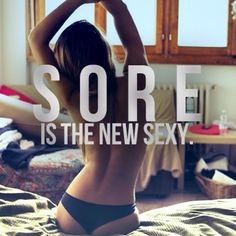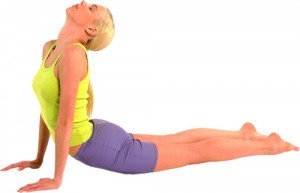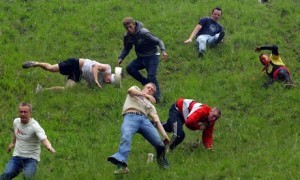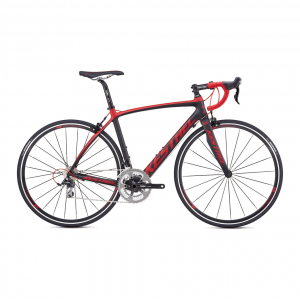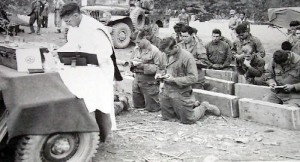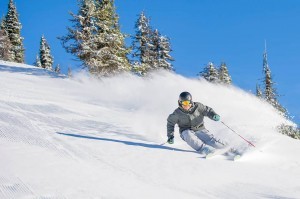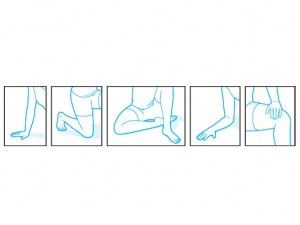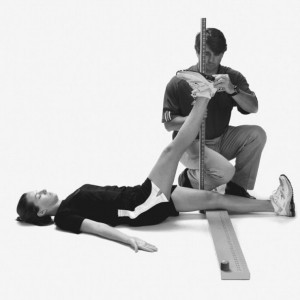This is the follow up to the post Is Sitting Killing Your Back? A Few Quick Fixes.You provided some excellent questions and comments from that post so now as a reward I've got The Top 6 Tips to Save Your Back When Travelling. Some of these tips relate specifically to driving your vehicle and others have to do with air travel. Tip #1 - Set the Alignment Before You StartDo you think you feel better after travelling when you feel good before you start. And similarly don't you think you'd feel worse after travelling if you felt tight to begin with? Probably so.Before I get on a plane I make sure to do some foam rolling. I want to release any tension I'm carrying in my body and not put additional stress on joints. 15 minutes of foam rolling while watching tv is a small price to pay for the benefits is extends after a 5 hour flight to Hawaii.As soon as I arrive I want to make sure to target the areas that tightened up during travel and resume light activity as soon as I can.Tip #2 - Set Your Mirror Up HighOne of the most common ways we wreak havoc on our backs when sitting is by slouching. We slide forward in the chair. Our hips tuck under. Our pelvis tilts posteriorly and we round our low back. None of which is good.By setting your rear view mirror as high as possible, but still where you can see traffic, you'll be forced to sit taller and minimize the potential for slouching.And when you can't see in the mirror anymore? Don't adjust the mirror down. Instead sit up or pull over and take a break.Tip #3 - Empty Your PocketsDo you remember what George Costanza's wallet looked like on Seinfeld?It was so jam-packed...
3 Things to Drop From Your Workout
- Chris Collins
- Training
- Injury Prevention
- 1503 Hits
- 1 Comment
-
One of the great things about life is that it constantly changes.And there always opportunities to experience new things, to learn and to grow.With education and wisdowm we hopefully will do a better job as move through life when it comes to our health and fitness.Sometimes we'll learn a better way to get an end result. It may be a new way to mobilize a joint or to provide more stability. It may be a way to ellicit new strength or power gains. It could also be a way to recover more quickly from one session to the next.But life isn't always about finding better ways. Or short cuts. Or ways to get ahead.Sometimes it's finding out what hurts us. And then trying to stay away from the danger.***if you don't know it already Dumb and Dumber is often quoted during staff workouts, conference road trips and many other times***But besides sticking your tongue on a frozen ski lift there are things happening during training sessions which are just as bad.Below are 3 things you make sure you aren't doing when it comes to your training. The cool thing is that they all have something in common.What's the common link?With all three there is excessive lumbar movement. So we've dropped these exercises from our programming to minimize potential strain to the low back.Don't Do Movement #1 - ScorpionWe don't use this as part of our warmup any more. But I'll admit that a few moons ago we did.The goal was to increase hip mobility. Instead the hip reaches end range and further motion comes at the expense of the low back.Don't Do Movement #2 - Supine Hip RollsWith many sports and activities a common goal is to encourage separation of the upper and lower parts of the body. Sometimes this is referred to as dissociation...
Quick & Easy Shoulder Warm Up Drill
So we're into the final phase of our powerlifting program here at Okanagan Peak Performance Inc. In other words we've got 3 more weeks, not counting the one week unload at the end, to make the biggest gains possible before we test our lifts again.On December 15th we're going to have an intra-club powerlifting meet. Anyone can come out on this day if they want to test their deadlift, bench, squat and chin up. You don't have to participate in all of the lifts. And if you just want to come out, see what it's all about and cheer us on you're welcome to do this as well.But that's not the main purpose of this post. What I want to share with you is a great way to warm-up the shoulders before any upperbody training session, specifically for pressing motions.What is this great tip I'm talking about?Well I was probably first exposed to it by Tom House at an NSCA coaches conference. Baseball players, specifically pitchers, will know this name.Later on at a course in California I was able to experience the benefits of this on a commercial type version of this device.Later, I came across a tool that I picked up at another conference and almost had it confiscated going through security at Calgary International Airport. Can you believe security thought it was a crossbow?And more recently I collaborated with Eric Cressey on a program and some coaching for a local pitcher. Anyone who reads t-nation or baseball specific training will know this name. Speaking of powerlifting, Eric has deadlifted over 660 lbs while weighing in the 160s!What I'm talking about is using vibration training or some rhythmic stabilization drills into your program before you lift.Before I get into what kinds of drills you could do it's important to realize...
5 Benefits of Barefoot Deadlifting
- Chris Collins
- Fitness
- Training
- Injury Prevention
- 1886 Hits
- 7 Comments
-
We have a number of our clients deadlift barefoot. And usually they ask us why? Below is my answer. In the last few years the pendulum has swing towards minimalist running shoes. From the Nike Frees to the Vibram 5 Fingers and everything in between there is definitely more awareness as to the benefits of barefoot running. And while it may not be necessarily in correlation to the barefoot running movement there are more people who workout barefoot on the gym floor. Or maybe they would like to train barefoot but their gym doesn't allow it. Some gyms, specifically ones in New Zealand, encourage barefoot training for their average to elite level members. For the novices and anyone with special needs regular footwear is required. When we're talking about gym workouts there is one exercise in particular that justifies barefoot training. And while many things in a gym may be done to look different but not actually serve a purpose this is something that will allow you to train more safely and effectively when you deadlift. Below are 4 Reasons to Deadlift Barefoot. Reason #1 - Better sensory inputWhen you deadlift you feet are what connect you with the ground. And this lift is definitely an example of press your heels through the floor to pull the bar off the floor and finish by extending the hips. If we are off balance we are not going to recruit the right muscles, at the right time and in the right plane. Any of my grade 10 science students will recall this is called neuromuscular efficiency. And our ability to be neuromuscularly efficient is enhanced when the sensory input from the ground through our feet is maximal. Think about it this way. We are taking in sensory input through our feet. How well...
Yoga - Is It Good for Athletes?
Everything we do with our clients has to serve a purpose.The foam roll drills and stretches need to facilitate increased mobility. The nutritional plans need to provide the essential nutrients, energy and hydration. And the training plans need to fit the needs, goals and abilities of the individual doing the work.So I'm always curious as to why people go to yoga?A quick google search lead me to healthyyoga.com with the Top 10 Benefits of Yoga. Their list includes:1. Stress Relief 2. Pain Relief 3. Better Breathing 4. Flexibility 5. Increased Strength 6. Weight Management 7. Improved Circulation 8. Cardiovascular Conditioning 9. Focus on the Present 10. Inner Peace***I'll look at 4,5 & 8 below. The rest are fairly subjective and therefore difficult to measure.***There is no doubt that a number of people practice yoga but I'm always curious as to their reasons? I look at everything that our clients do as being beneficial and purposeful.And yoga has me perplexed.Because I hear constantly of the purported benefits of yoga. And especially the benefits it lends to sports performance.In fact there is power yoga which sounds like it would be perfectly suited to athletes that are seeking more power and to move more quickly.But power is the definition of the amount of work done per unit time. And work is equal to a force applied over a distance. So you need to move a substantial force quickly over some distance to train for power. Holding bodyweight poses for extended periods of time hardly meets the criteria for power development.Case in point India has one, count it one, individual gold medal in the history of the Olympics. Ever. And by the way that gold medal came in air rifle. Hardly a sport requiring power. Well, a powerful gun maybe :)In a similar sense to the...
Tight Hips - Real Client Solution
Do you remember one of the things many teachers would say at the beginning of the year? You know when everyone is new to a class and nobody feels comfortable to ask a question? And even when the teacher would put a question to the students everyone would stay quiet. And so at a certain point the teacher would say questions are great because usually there is someone else thinking the same thing. This is the inspiration for this post. Hopefully the content helps a number of you as well with your training. Let's get at it. The other day Joanne K. was doing front squats and mentioned that often feels restricted in the hips. I say hips plural because she mentioned that the restriction alternates between right and left depending on the day. [caption id="attachment_3037" align="alignleft" width="200"] Psoas, one of the hip flexors So here's what we did.First of all I took a look at Joanne's squat pattern. This involves looking all sides and examining for alignment, depth and symmetry. What stood out was there was a slight collapse of the left knee. Now we had something to address. First we had her foam roll the left adductor followed by an exercise to activate the left external hip rotator. For this we used a banded clam shell exercise. This took all of about 5 minutes, or less, to do. When Joanne retested her squat she said it was substantially better without a pinching at the hip. But what about the fact the issue seemed to alternate from right to left depending on the day? Well first we'll assume the warm-up and training is performed in a balance matter. Then the other thing to examine is activities of daily living which may contribute to this imbalance. In this situation we discovered...
The Good & Bad of Crossfit - Part II
- Chris Collins
- Fitness
- Training
- Injury Prevention
- 1599 Hits
- 3 Comments
-
In my last post I went over the things that don't make sense to me as coach when it comes to Crossfit. However to be fair I want to present both sides. So here is the Good of Crossfit.I've got to give Crossfit props. They do some things really well. Although most don't have to do with training.Community - They definitely do a great job of creating a sense of community amongst their members. I'm not sure if it's so much that they identify with the process or if it's a trendy place to train. Members can get all their ink done, pull up the knee high socks and ditch the shirts once they get at the WOD. If you are a CFer you eat, breath and live the culture. You're all in or you're out. I like that about them.Record Keeping - It appears as though every workout is tracked and measured. And this is a great thing. How else are you going to know how you're doing and if what you're doing is working? A quick Google search will quickly provide tons of data regarding times and best scores for the various workouts Crossfitter like to do. Many fitness professionals would be wise to steal a page and keep these types of notes as well.Marketing - They sure do a great job of getting the word out there. If you're involved in fitness chances are you've heard of Crossfit. And they were the ones to land Reebok as a major sponsor of their brand and competition. Maybe you've seen the Crossfit games on TV. Or come across an article about in a fitness magazine. Whatever the method they are doing a really good job of getting their name out there.Competition - They hold competitions to measure yourself against others....
Fitness Coaching with Analogies
When it comes to coaching everyone has a different style. Sure we pick things up from different coaches here and there. We'll steal a tip from this one. We'll adopt a practice from that one. But for the most part we have to figure what our style is and then develop it to the best of our ability. Learning to Lift Analogies For me one of the things I like to use when coaching is analogies. Big surprise right! Why analogies? Well because it allows the coach and client to find a common reference point regarding the concept being addressed. It gets away from the specific language and terms that both people may people may not be familiar. Analogies can also make the experience more fun. Because when someone steps on the training room floor they be very unaware of the technique required to perform a lift. Some may think they know what they're doing and then as a coach when you watch them lift you realize they don't. So you need to step in and coach them. Here's how I like to coach a lift. Analogies Save Time & Money First, of all don't let someone continue performing lots of reps the wrong way. This just ingrains a poor motor program which is then harder to fix later. For example, I wouldn't look over and say to myself 'wow, that guy (or girl) is using terrible form on their deadlifts! I should talk to them later.' That would be like watching someone drive past you in their car going the wrong way and you don't stop them. You let them continue on thinking they are making progress in the right direction but instead they are wasting time and money. Worse the path they are headed down may cause extensive damage...
8 Things to Prevent a Bone Fracture
[caption id="attachment_3199" align="alignleft" width="183"] Proper landing mechanics are an essential part of injury prevention.Are you following the NCAA basketball? Or March Madness as it is more commonly known? I think this is one of the best sports tournaments going because it has such as great format with the 'one-and-done' arrangement. To be honest I don't spend a lot of time watching college basketball during the year. But when March rolls around I try and check out a few games. This year is even more special as I got to go to some games. While I was down to California for a conference I managed to find some tickets on Craigslist for the games in San Jose. What a blast! What made it even more fun was the fact that I was able to keep it a secret from Megan right up until tip off at the arena. But although the experience was once in a lifetime and a fun thing to do on the side at the conference I actually want to talk about a game we didn't see. The one where Kevin Ware, from Louisville, broke his leg. Now if you have a weak stomach don't go check it out on youtube. And sorry Jordy, but blurring your eyes when you watch doesn't prevent nightmares. Anyways after seeing this horrifying accident I thought to myself 'I wonder if he had been doing x-y-z prior to the accident?' And I also thought this might interesting and useful for you as well. So here are 8 Things to Prevent a Bone Fracture. 1. Eccentric Training One of the first things that comes to mind is eccentric training which is the portion of a muscular contraction when the muscle is being lengthened. This is when most injuries happen so it makes sense to...
What to Drink for Your Goal
Do you like to drink? And unless you're like a few of my college buddies I'm talking about during the day, while at work or at school. I guess it's not so much a question of 'do you drink?' but rather 'what' do you drink? But you have to admit asking the question the other way got a number of you checking the calendar to see how many more days until the weekend. But seriously though when it comes to our nutrition it seems as though more emphasis is put on what to eat rather than what to drink. And this will trip up many people. How does it trip them up? By drinking things that don't support whatever their goal is. And in this case the goal could be weight loss, weight gain and or performance. So let's take a quick look at each of these to see what you should be drinking. Goal #1 - Weight Loss If you're like most people that go to the gym then your goal is weight loss. And as soon as we can agree that six packs are made in the kitchen and not the gym we'll be way further ahead than if we think we can go for extra walk after dinner to make up for the cherry strudel you had for a mid-afternoon snack. But even if we realize that our nutrition plays the most important role in our quest for the leanest physique we need to be aware that our choice of beverage can severely impact our goal. So what should be drinking? The best choice are water and green tea. There are no calories and the polyphenols and caffeine in the tea may help with your weight loss goal. Just be careful to monitor your caffeine intake and the potential for...
Slowing Down Training
- Chris Collins
- Fitness
- Training
- Injury Prevention
- 1590 Hits
- 2 Comments
-
'Train slow - Best slow' Have you heard this saying before? I want to give credit to legendary strength & conditioning coach Al Vermeil as he's been known to have a number of original saying related to training. Another one I know for sure Al said was related to plyos where he said 'the bigger the athlete the smaller the hurdle' (or box). But back to the original statement this has to do with the specificity of training. If you are an athlete that requires speed it is important to use movement, drills and exercises that develop the capacity of the athlete to move and perform at a high velocity. And typically what happens is people watch YouTube videos of people performing insanely high box jumps or their favourite athlete is featured in a commercial doing something explosive. All of a sudden everyone wants to start there. Day 1 and they want to do max height box jumps, plyos, Olympic lifts and anything else that is worthy of a facebook post. Let's face it there aren't too many 'likes' for someone being able to hold a proper plank for 60 seconds. So do we really have to 'go big or go home'? Is there value to slowing things down a bit? Can you still achieve your potential without going all out all the time? The answer to all of these is No-Yes-Yes. In particular there are a couple of times when slower is better. In particular when you are performing stability or balance drills there is more benefit to slowing things down. Consider the following couple of scenarios. Slowing Down Plyometrics An athlete could be performing Heidens, bounding from one leg to the other. This is a great drill to develop power in the frontal plane. When this drill is performed with...
Good Exercises Done Wrong - Stability Ball Hands to Feet
I remember a number of years ago when I first got started in the training industry. And I attended a fitness conference down in Vancouver. This would be the first time I would get to see and meet Peter Twist, who at the time was the strength & conditioning coach for the Vancouver Canucks. Now Peter was a big advocate of using balance tools in training and incorporated a number of different exercises using stability balls, balance boards and BOSU trainers. And if the novelty of a new training toy wasn't enough to get the average exercise, or athlete for that matter, excited about training I don't know what would. But to make even more enticing we found lots of ways to perform our core training on a balance or stability ball. One of the exercises that came out of this period of training was the stability ball pass from hand to foot. To perform you start in a supine (on your back) position with a stability ball between the feet. The arms are straight and overhead on the ground. The legs are lifted off the ground and the ball is passed to the hands over the trunk. The ball is then reached overhead as the legs are lowered to the ground in a controlled manner. When performed properly this is a great drill. It incorporates hip & shoulder flexion while having to stabilize through the lumbar region. And who doesn't need more hip & shoulder mobility plus core stability, right? This seems like a great drill. Unless of course we compensate when we perform the drill. How do we compensate? Well imagine that your core stability determines how low you can lower your legs towards the ground when they start in a vertical position. A stable core will allow the...
Ditch the Flip Flops
Do you remember a few years ago when minimalist shoes became all the rage? In particular I'm talking about the 5 Finger shoes where each toe has a separate compartment like gloves for your hands. People would wear these for training in the gym, while doing daily errands and even to some work places. And an interesting thing seemed to occur when people starting wearing this type of footwear. First they noticed improved function at the joints through the lower extremities such as the foot, ankle, knee and hip. If they had back pain they maybe noticed that this was lessened or less frequently a problem. As well due to the physical separation of the toes and the lack of a built in arch support the structure of the foot began to change. Due to the physical separation of the toes the feet developed a wider platform. This became really noticeable when at a houseboat party for my wife's work and I had my shoes off and my toes were splayed widely compared to everyone else's toes which looked like sardines packed in a shoe container. The other difference you will notice with wearing minimalist shoes is the shortening of the foot. Why does the foot shorten? Well since there is no external arch support we must develop our own arches and therefore this lifts the foot through the middle. The higher arch shortens the distances from the toes to the heels and so you may notice your regular shoes fit a little looser. But not all minimalist shoes are your best option. With the 5 Finger variety there are a number of benefits including the independent articulation of the toes, the development of the arch, the flexibility of the sole to allow more ground contact and the lower heel position....
The Value of the Warm Up
- Chris Collins
- Fitness
- Training
- Injury Prevention
- 1604 Hits
- 0 Comments
-
So yesterday I had the chance the play a round of golf with a buddy, Jim, and he invited a couple of friends which was great. I actually knew one of the guys from many years ago at a gym in downtown Kelowna called Flex Fitness. Anybody remember that place? Anyways Jim and I planned to have lunch on the course and then hit a few balls before teeing off. Well we got involved in conversations about travel and other things that we didn't realize that we hadn't gotten our food and we had about 10 minutes until we were due up at the first hole. Needless to say we didn't hit any balls at the range and went straight from the restaurant to the first tee where we both proceeded to find the sand. While it was a beautiful day I would have been okay with the middle of the fairway rather than the beach. To summarize the round I was about 11 strokes better on the back nine than the front. And I attribute a large part of this difference from a lack of a warm up before playing. And it got to thinking back to a study I had read in the Journal of Strength & Conditioning Research which had 30 military cadets performing a number of agility and power tests after either: * a dynamic warm-up* a static stretching warm-up* or no warm-up at all The tests were a T-shuttle run to measure agility as well as a medicine ball throw and a jump test. What they found is that the dynamic warm-up group outperformed the other two groups on all three tests. There was no significant difference between the static stretching group and no warm-up group on the agility or med ball throw but the static...
Segway Running
- Chris Collins
- Fitness
- Training
- Injury Prevention
- 1563 Hits
- 0 Comments
-
Have you ever been on a Segway? Or better yet do you know what a Segway is? You typically see them in larger centres, specifically being ridden by mall security. The rider stands on a platform with a handle in front and two wheels at the base. To initiate movement the rider leans their body forward which is detected by a gyroscope within the unit and results in forward motion. Motions other than leaning the until forward by shifting body-weight won't help in moving the Segway. In the same way the Segway can be stopped by returning the unit to a vertical position, and I am assuming, come to sudden stop if the unit is tilted backwards. We can think about running in the same way. To generate the forward momentum to propel us we need to have our centre of mass in front of the point of ground contact. Some describe running as 'controlled falling'. The body is falling forward and we catch ourselves with each stride just enough to not fall flat on our face but not so much that we can to a complete stop. This forward lean of our bodies needs to be from the ground however. Many hear this concept of having a forward lean and simply bend over at the waist rather than leaning from the ground. By bending forward at the waist a number of bad things happen. 1. Less Stability We don't maintain the tallest spine possible. And a tall spine is a more stable spine. So when we are shorter and we shorten the lengthen of the spine we won't be as stable. A lack of stability means that every time a foot contacts the ground some energy will be lost as it leaked out through point in the kinetic chain where...
Deadlifts Are Bad
So this week we had a client that was seeing a chiropractor and was informed that there was a particular exercise that no one should be doing. And based on the title of this post you already know what the exercise is. But we train a number of our clients with deadlifts. And we don't have DC after our names. So what does this mean? Well since Breaking Bad is done I know you've got nothing else to do but stick around and find out the truth. Which is that deadlifts are not bad. Nor are deep squats. Or bench presses. Or biceps curls in the squat rack. (I threw that last one in as a trick to see if you're still paying attention. I do my biceps curls on the Olympic platform) In fact there is no such thing as a "good exercise" or a "bad exercise". There is only exercise done with proper form or improper form. Simple as that. Because here's the thing...we all deadlift anyways. A deadlift is basically a hinging movement at the hips. So whereas a squat would involve most of the bending to happen at the knees a deadlift involves most of the bending at the hips. Imagine all of the times you may hinge (deadlift) in a day: * picking up your suitcase off the belt at the airport* taking a bow as conductor of the symphony orchestra* closing your gar door when your arms are full of groceries But I would go further than to simply disagree with the premise that deadlifts are bad for you and should be avoided but they are good for you and should be in most people's programs. Why are deadlifts important? Because they promote the ability to remain in extension. Flexion on the other hand:* usually...
You're Not Doing Tabatas
It seems like high intensity interval training (HIIT) is all the rage these days. Anyone can do it at anytime as frequently as they like and achieve amazing results. Sound too good to be true? That's probably because it is. If you're not familiar with HIIT you may be more familiar with the Tabata protocol or some other version of high intensity short duration exercise. Let me re-phrase that. You may be familiar with the name Tabata but it's unlikely you're familiar with the actual protocol of the study performed by the researcher of the same name. So why is the general population going crazy over HIIT or Tabatas? Well because the landmark study, and others by researchers such as Dr. Martin Gibala, indicate that you can achieve weight loss, improved aerobic function and potential performance with a fraction of the time invested in training as is normally thought to be necessary. Now before I give you some things to consider before jumping into HIIT or Tabatas at your next training session let's quickly review what the Tabata protocol involved. While two groups participated in the study the one we are interested in is the short duration, high intensity group. They did:* sprints on a braked cycle ergometer* 7 or 8 sprints of 20 seconds in duration* 10 seconds rest between sprint attempts* at an intensity of 170% VO2 max* for a 6 week period Now there are a number of things to be aware of here when comparing this protocol to what many exercisers believe there are following when they workout. So with that in mind here are 4 Reasons You're Not Doing Tabatas. Reason #1 - You're not on a bike While it's true there are many benefits of cross-training it's a bit of a stretch to do something...
The Basics - Done Wrong
Over the years there have been a number of things we've heard repeatedly in the fitness industry. And sometimes there is no basis to these statements other than the fact they have been repeated enough times and they are accepted as truth.For example, 'eat small frequent meals throughout the day to stimulate your metabolism' is one that comes to mind. You've heard this before I'm sure. But where is the scientific research that backs this claim? If anything maybe what happens is we end up eating frequent meals throughout the day. Just not small meals. And thus the supposed benefit is lost.Let's look at another example.How about 'no pain, no gain'? Everyone has heard this and we all know there is no truth to it. Further we could actually turn this upside down and say 'no pain, all gain'.So where I am going with all this? Well this past weekend we were down to Seattle for a clinic with Eric Cressey. Eric is a Boston-based strength coach with that works with a number of major league baseball players. And he is considered an expert when it comes to all things related to the shoulder and training.And he was sharing some things that may would challenge what many trainers and strength coaches believe and have been taught. With that in mind here are 3 of the Basics - Done Wrong.Basic #1 Done Wrong - Do Yoga Push UpsI'll wait a minute while you rub your eyes and re-read that last statement. Yes, I am advocating yoga push ups. Now before you all load up and throw your lululemons at me let me clarify.I am saying yoga push ups may be a good idea. And here's why.With most bench pressing the shoulder blades can get stuck in place on the bench and aren't...
Good Exercise Done Wrong - The Abs Wheel Roll-Out
The number one goal of people that go to the gym is weight loss. And of this group I would guess that flat toned abs is the ultimate physical outcome of this goal.Now I realize I'm preaching to the choir when I say that a great mid-section is made in the kitchen and not in the gym. But even though many are aware of this they still want to know the newest, hardest and most specific core and abs exercises.Before I go any further it may help to watch a short video to see what I'm talking about.http://youtu.be/AFb9An66IxkAnd so you see all types of core exercises being done in the gym. One of the more popular ones is the roll-out. This can be performed with a variety of equipment including a stability ball or abs wheel but there are also versions using a barbell, a suspension trainer or even a slideboard.And while this is a commonly performed exercise it often performed incorrectly.I say that because the goal of the movement is to remain motionless through the mid-section in the presence of movement through the extremities.Let's assume you were performing a roll-out from the knees. You will pivot on your knees and the shoulder will flex as you roll the implement out and away from you. As you return to the starting position your shoulders will extend all while maintaining a neutral mid-section, specifically at the low back.Typically we see three things done incorrectly when performing the roll-out.Mistake #1 - Extended NeckAre you familiar with the term of a 'packed-neck'? If not don't worry about it. It resembles the chin closer to the chest rather than the head tilted up exposing the neck. When done correctly it may cause you to have a double chin.You have to admit that's kind of funny,...
3 Common Push-up Mistakes
If you asked people who work out what is one the most basic bodyweight exercises you can do, what do you think the answers would include? Probably movements like pull-ups, chin-ups, squats, lunges and of course push-ups. If you think about push-ups might be the most common answer as you don't need a bar to grab as for a chin-up or pull-up and lower body training is usually equated with going for a walk or a run. So push-ups could be considered the gold standard of bodyweight training. This makes sense when you think of all the versions that exist of this exercise. You can do regular, hand reset, feet elevated, scapular, shoulder touch, Spiderman, off-set and many more types of push-ups. But there is something that unites all the various types of push-ups. And I don't mean that they are all closed-chain horizontal pressing movements. No, unfortunately the common trait is that they are all done incorrectly. What? How is that possible? Isn't a push-up simply placing your hands on the ground, setting the feet and then pushing the body away from the ground? Yes, it is but there are a number of other things going on which create problems and undermine many of the benefits that come with doing this exercise. So here are the 3 Most Common Mistakes Made When Doing Push-ups. Check out the video first if you're in a hurry or to get more out of the text. http://youtu.be/sdLsJd0w9bc Mistake #1 - Pecking the Ground Like a ChickenWhen you do a push-up the arms and should be the only parts of the body that are moving. And when the set starts to get a little tough you see the head start pecking the floor like a chicken. Rather than let the head start moving around like...
Two lessons from a powerlifting contest
Last Saturday we held another powerlifting contest at Okanagan Peak Performance Inc. Here's a quick recap of the day and two quick lessons that will help you improve your lifts. The one interesting thing about our powerlifting contests is how casual they are. We have the music playing. Everyone is joking around. And everyone is wearing triple layers of everything as it is -18 C outside. But once we get started we look forward to seeing who can lift what for deadlift, bench press, squat and 3 rep chin up. And it's always fun when friends and family come by to watch. One of them observed a successful deadlift, which involves picking a bar up off the ground and standing up with it, and commented 'now what?' Yes, it's true powerlifting may not impress everyone but it's still a great way to see where you're at. And besides seeing where you've made gains with your lifts you also learn quite a bit about the lifts themselves. Lesson #1 - Sticking Points ExposedFor example, you learn your sticking points. This is the part of the lift where the bar seems to stop moving and either leads to an unsuccessful attempt or results in spending an excessive amount of energy in order to complete the rep. Let's consider the bench press. If someone were able to press the bar off their chest but not be able to lock out the lift it may be that they lack triceps strength which is crucial for extending the arms and finishing a press. Maybe some isolated triceps training would help this person complete the rep more easily and push through to new gains. Or it could be that someone is able to pull a deadlift to mid-shin but lacks the glute and low back strength to...
Back Bridge - The Anti-Sitting Exercise?
It seems like everyone is familiar with the problems of too much sitting. From tight hips, weak glutes, forward head position, flexed wrists, slumping into poor posture and a lack of caloric expenditure it's easy to find reasons to hate on sitting. So instead we opt for different ergonomically designed chairs. Or sit on stability balls (which still allow for all the same problems described above). We raise our desks so we have to stand to work at them. We drink more water to force us to stand every so often to use the bathroom. And some people have figured out the benefits of kneeling versus sitting. But even if we change our work or study environment to eliminate sitting there are still times when we will have to sit. Unless you own a Pope-mobile or a Segway I'm sure your daily commute involves some sitting. As do certain meetings, meals in restaurants, nights out to the movies or theatre and trips to the bathroom. If we can't eliminate all sitting from our lives maybe we should be incorporating more anti-sitting drills and exercises into our training? I think a lot of good coaches are already doing this by programming extra posterior chain work for the glutes and low back while putting the client in a kneeling or standing position. Is there anything else we could do to undo the effects of sitting? Sure and it's something most of learned how to do at a young age and it's the back bridge. ***short disclaimer...the back bridge requires high levels of mobility at the wrists, shoulders and hips and is not recommended for those with any type of pre-existing back condition...if you pass the clearance tests just described than feel free to try the easiest versions first and build up muscular endurance...
4 Levels to Learning
What does it take to succeed?For the sake of this conversation I'm referring to athletic performance but the same analogies would apply for success in weight loss, injury rehab or any other physical pursuit.What does it take to be at that top level?I like to refer to something we refer to as 4 Levels of Learning and here's what is looks like.Level 1 - Unconscious Incompetence[caption id="attachment_3772" align="alignleft" width="180"] Don't waste your efforts going the wrong wayBasically this means 'you don't know what you don't know'. Someone is making mistake and spinning their wheels but has no idea this is happening.For example, imagine if were in a running race and you made a wrong turn. So you are going in the exact opposite direction of the finish line. You run as hard as you can giving your best effort but are surprised when at the awards ceremony you aren't on the podium receiving a medal.You can't understand it? You ran hard. You pushed yourself as much as the winners, if not more, yet you are not rewarded for your efforts.Another way of thinking about this would be to watch someone in the weight-room with terrible technique performing some type of exercise.Let's use kettlebell swings as the example. The person doing the swings has heard all of the great benefits of swings yet continues to suffer injuries and doesn't see any improvements in their performance.Yet when any coach sees them swing they cringe and want to help them fix their technique.In both these situations we have individuals who are making mistakes but don't even know it. It's this type of situation where people who do nothing may see better results due to the fact the efforts of the ones trying are full of errors.Level 2 - Conscious IncompetenceFor this level let's continue...
The Problem with Going Vegan
In my last post I signed off by saying I got in trouble at the ski hill. And suggested that it may have been my new celebrity friends that saved me from having my ski pass revoked. The people I'm talking about are the Crown Prince of Thailand and Canadian Olympian Jon Montgomery, who is also the host of the Amazing Race Canada. I'm calling them my friends because we stayed at the same hotel for a few days in St Moritz. Montgomery is there trying to qualify for the Olympics in Sochi next month while the prince was on vacation. So we're not really friends. But I did cross paths with both of got a few pictures which was kind of cool.[caption id="attachment_3799" align="alignleft" width="225"] Piz Corvatsch 3451 m near St Moritz Besides the great skiing in Switzerland I was also fortunate to have someone looking out for me when giving me seat assignments as I always had an empty seat next to me which allowed for lots of reading and room to stretch out. One thing I noticed on the flight from London was the number of people that ordered vegan or vegetarian meals. This was obvious because these meals are all delivered first before the meat options are passed out. I'm not sure if this is because vegans/vegetarians (v/v) are weaker and can't last as long without some quinoa or kale, or if it's because the airline can't risk letting the v/v crowd see how good the meat options are because they wouldn't have enough to go around. So this got me to thinking...what are all the downsides with eating as a v/v? Let me spell it out for you. Problem # 1 - Nutrient DeficiencyLet me be clear before all the arrows are launched my way on...
Top 10 Benefits of Unilateral Training
Do you train on one leg? Or with one arm? If so, keep doing so. If not, here are a number of reasons to incorporate single limb, or unilateral training into your program. Top 10 Benefits of Unilateral Training #1 - SafetyFirst and foremost a program must be safe for it to be considered effective. If the risks outweigh the rewards for any exercise chop it from your program and look for another alternative. So why are unilateral lifts considered safer? Well it comes down to the fact that you are using less load. Instead of squatting with 315 lbs on your back for example you might do 225 lbs on one leg. As well, when you consider that many single limb exercises involve DBs, Kbs, cable or something other than a barbell there is less risk of getting trapped under a bar and pinning yourself. This is not to say that unilateral training can't be done with a barbell but it is rare. And in the rare instance you do use a barbell to do a unilateral lift you have the free limb there to spot yourself if needed. #2 - Increased intensityWhen you work with one limb at a time you can handle greater loads and increase the intensity of your training. To see this for yourself test what load you press dumbbells for 5 reps. Maybe you could do 100 lbs for 5 reps. Now rest a few minutes and try again. Only this time press with one arm. You will find you can reach 5 reps no problem and possibly bang out a few more and hit 7 or 8. So what happened? Did you magically become stronger after your first set? No, not really. Instead when all of your focus and attention was able to be...
Top 10 Benefits of Unilateral Training - Part II
To read Part I of this post click here. #6 - IDs weak linksWhat are your top three weak links? Quick don't take time to think. If you had to take some time to think about them then you probably aren't addressing them as much as you should in your program. Worse maybe you couldn't answer this question on the spot and don't know the answer. Worse still what if your opponent knew what your weak links were and exploited them during competition? Or if you became injured by not addressing them? The good news is that you can fix your weak links, even if you're not sure what they are. Any time you perform a unilateral movement pay attention to L-R differences. Are you stronger on one side? Is your balance worse on one side? Do you move better on one side than the other? Figuring out the answers to these will translate more effectively to enhanced performance than the best 'sports-specific' exercise ever will. Make notes in your training journal answering the above questions when you train. Where you are weaker do that side first. Where you don't move as well add in more stretches and mobility drills. And where you have discomfort seek out the best manual therapist you can find. #7 - Additional EST workEST is energy system training and refers to training the various system of the body that provide fuel for our various activities. Cardio tends to be associated solely with aerobic training and therefore we don't use that term unless the duration and intensity justify it. So how does unilateral training lend to EST? Well in a couple of ways. First, by using one limb you trigger muscles that typically don't get a lot of attention when two are used. Secondly the sets tend...
Hotel Gym Workout
Have you ever noticed how the more complicated things get the less useful they become? Obviously this doesn't apply to everything in life but there are times where we can get bogged down in the details. Consider the expression 'paralysis by analysis'. Too many choices to consider and we end up choosing nothing. Sometimes simple is best. Such is the case when you travel and are looking to do a training session at a hotel gym. You don't have all the equipment you like to use at your home gym so you must improvise and make do with what's available. Why hotel workouts are great And these can be great workouts as you tend to do something a little different. And because you don't know anyone in the hotel gym you will train without interruption or distraction. And lastly being on vacation usually means having a more relaxed schedule where you may have more time for the little things in your workout that get trimmed when time is short. Think of things such as a proper warm-up, the extra mobility work, the conditioning work at the end maybe even the corrective exercises prescribed to you at physio. So it's with this in mind that I want to show you exactly what I did for a workout in a Swiss hotel room a couple of weeks ago. There was no squat rack or platforms. They didn't have any kettlebells or a chin up bar. Basically I had a foam roller, dumbbells up to 20 lbs and a ball. Here's what I did. Sample gym workout 1. Foam roll - 10 minutes (remember I'm on vacation) targeting the glutes, piriformis, ab/adductors and t-spine 2. Stretch/Mobilize - 10 minutes 1/2 kneeling hip stretch + 1/2 kneeling hip rocking1/2 kneeling rear foot elevated hip stretch...
Good Exercise Done Wrong - Stir the Pot
There are a few staples most people look to include in their workouts regardless of the goal. It doesn't matter if the goal is weight loss, sports performance or rehab everyone recognizes the value of doing some type of core work.In the last few years one core exercise in particular has become more and you're seeing more and more people doing the 'stir the pot' exercise.Why the sudden increase in popularity of this core drill? Well much of the credit has to do with the stamp of approval this exercise got from Dr Stu McGill, the world-reknowed spinal biomechanist from Canada. When Dr McGill speaks on things related to core training people listen. And the sir the pot was one that he was recommending as a way to stabilize the spine and train the core.But besides the endorsement of a top researcher this exercise is also a great choice for a few other reasons:1. It allows for the development of muscular endurance through the core. When performed correctly an individual can gradually build with this drill by adding time or reps to their sets. 2. It helps develop anti-extension strength. While much of the fitness community talks to the need of getting out of the sitting position and performing anti-flexion drills there is also benefit to performing anti-extension drills. This is especially true for people who live in anterior tilt and have low back pain.3. It allows for the progression of the basic plank. Most of us start with planks to develop the core. And this is great. But it seems things go from the basic plank to trying to do fast movements with load. It kind of seems like sometimes we miss a step and the stir the pot fills this gap. It allows us to go from a stable...
3 takeaways from Hawaii
I'm just finishing a vacation with my family in Hawaii. And it's been a great week to spend time together and relax. But even though I'm on vacation there are still times when I notice little things that will help me as a coach. Below are the 3 takeaways from my time in Hawaii. Slow down to learnIt seems as though everything in life is automatic and has to happen now. We can stream pretty much anything online without having to wait, do our banking in our pyjamas and have learned that we don't need to wait. While I was snorkelling near Waikoloa I would float over a some corral and not notice too much. I could very easily have changed directions, looked elsewhere or switched gears and grabbed a boogie board instead. But I waited and just floated there for a second. And a variety of life came out from hiding. Fish that had tucked under the corral or stopped moving to blend in with it assumed everything was safe. The amount of life, colour and activity that presented itself was amazing. It's all because I gave it 5 seconds to develop for me. Do the same thing with your training. Don't rush things. Be patient. Really learn to listen to your body, to the movement and to notice the subtle aspects of your training. Because if you're always in a race you'll miss a lot of the little, very important lessons right in front of you. There is always lots to improveAs you become more patient with your training you will notice more things that you can improve. Take breathing as an example. The complex where we were staying at had a gym. And by gym I mean a 10x10 foot room with a treadmill, bike, elliptical and a...
Why stretching might be bad for you
It seems like there are certain things in life where there isn't such a thing as too much of a good thing.You know what I mean?For example, not too many people would say no to a raise at work. Or a few extra days on a vacation. Or to any of the things we work to achieve and be rewarded with.In the same way in fitness we can sometimes see certain aspects of training as being not only essential for everyone but that it would be impossible to do too much of them.Usually this goes hand in hand with the things we don't like to do during our training. This may include a proper warm up, or core training, energy system training or maybe even stretching.For many stretching tends to be the element of their training that gets neglected. We put in the reps and sets or go for our runs but then skip the cool down and post-workout stretch. I know I am guilty of this.And as we age and settle into jobs where we sit for a big part of the day and we notice a change in our mobility. It gets harder to touch our toes. We can't reach our arm behind us to scratch our back. Basically we notice that aren't as flexible as we once were.And we recognize the need for increased mobility and stretching to achieve this.But this may not be the best solution for everyone.Last fall I attended a clinic with Eric Cressey presenting in Seattle. (Graeme was at this event as was Megan). Anyways Eric talked about using a series of tests to the assess the mobility (or hyper mobility) of athletes using the Beighton Test.[caption id="attachment_3894" align="alignleft" width="300"] The 5 Beighton testsThe image above shows the 5 tests which involve:* bending the...
Easy way to sprint 5% faster
It's hard to find a sport where having less speed would be an advantage. And in this case we would have to be talking about sports that are objectively measured i.e. faster,higher,stronger as opposed to subjectively measured with judging.I don't have to think back very far to a situation where I wish I was a little bit faster.This situation goes back to when Megan and I were in Las Vegas for a conference and had plans to go to a concert on one of the nights. Anyways the conference schedule was to have all the sessions completed by 6 pm with the concert set for 730 pm.It looked as though everything was going to align perfectly for us and then the presentations went over time and the conference was behind schedule. This meant that we would now miss the last presentation of the day.But guess what?The last presentation was by a friend of mine. And were sitting up near the front row.I was waiting for the previous speaker to finish up so we could sneak out during the break and not create a distraction during my friend's presentation.Of course the conference host takes the stage and announces there won't be a break and they will go straight in to the next session. So I lean over and tell Megan 'we have to leave now'.So we pack up our stuff, trying to quickly and quietly exit from the room as the next presentation is starting.Now this where more speed would have helped me.I had been sitting for 9 hours and so I would be tight and slow moving. If I had the time what would be the best way to to sprint the 20 or so meters to the back of the room and out?Should I do some aerobic exercise?What about a...
Rolling patterns for health and performance
So how do you roll? I don't mean this in terms of your style but more as to how you move. [caption id="attachment_3979" align="alignleft" width="300"] This is not how we roll For most of the adult population the day consists of sitting on the commute to work, sitting at a desk, sitting on the drive home, sitting to eat dinner followed by sitting down to watch the latest episode of Suits. [caption id="attachment_3980" align="alignleft" width="238"] You might want to sit down for this one While the obvious pattern above is too much sitting we make this worse by not only not moving enough but moving in only the sagittal plane (think forward and back). We are ignoring movements in the frontal and transverse plane. Recently we have seen in increase in multi-planar movements and function from people like Dewey Nielsen, the folks at Primal Move and any else that trains with varied movement and challenge. So why the interest in rolling and 3D movement? Well part of this traces back to how we learned to move as infants. We learned head control, then as we explored with our heads to get to whatever it was that caught our attention we would bring our opposite arm or leg over to flip over. And while we learned this rolling pattern as infants it has been lost as we become more sedentary, become injured and age. However as we address our ability to roll we can see improvements in our ability to perform in rotational sports such as hockey, tennis, golf as well day to day movements such as squats and hip hinges. Check out the video below to see Charlie Weingroff, who spoke at the 1st Okanagan Strength & Conditioning Conference, talking about rolling. http://youtu.be/gmQuG2mnkWwHere are a few takeaways from the video and...
Rotational Core Training
It seems like a core training is a staple of every training program regardless of the goal. [caption id="attachment_2968" align="alignleft" width="266"] What many consider a core exercise. Want to address a low back issue? Do more core training. Want to improve your sports performance? do some core drills specific to your sport. Want to tighten up your mid-section? Do some abs-specific core drills. Now I'm not saying this is the best or only way to achieve your goal in these area but that this is what many will default to in order to achieve success. And there are a couple of ways we typically train the core in terms of the plane we are moving in. 99% of our training is in the sagittal (forward and back) plane and so we do: * crunches * reverse crunches * leg raises * roll outs ...you get the point. Many core exercises, and well exercises in general, are designed with a forward and back emphasis. But sometimes we'll add in a side to side core drill targeting the frontal plane. This could include: * side bridging * side crunches/bending/flexing * lateral pulls or lifts Now do you notice anything in common about training in the sagittal or frontal planes? The features in common is that gravity helps to reduce the force. For example, if you were on the ground on your back and tried to sit up gravity works against you and slows down this movement. As well, if you were on your side in a bridge position gravity works against you and makes it difficult to hold a tall position for an extended period of time. However when we move in the rotational plane (think twisting) gravity down not slow down the movement. If I hold a basketball at chest height and...
The Superficial Back Line
What are your problem areas? You know what I mean? What are the areas that you constantly have to stretch or where you are more likely to feel tension in the body? Some people would answer their hamstrings. Others would say their low back. And others might say that it's their upper traps. At this point when we have listened to our bodies closely enough to figure out something is wrong we have two choices: 1. We can continue on as if nothing is wrong. We do this by working around our aches and pains. We found new exercises to target similar muscles and actions. We may try a new split putting less emphasis on this problem area. Or we may power through our training sessions thinking this is part of the process and it proves our toughness and commitment to our goal. 2. We can address these issues and seek help. We will book an appointment with our therapist of choice and get some relief. We may find out what the issue is and learn which movements to reduce in our workouts and which ones we have been neglecting. We realize that the solution is neither an independent effort on our part nor the responsibility of another health practitioners but a joint effort to address the issue. Hopefully we are all people that prefer option #2. Now imagine a group of people that had issues with: * the bottoms of their feet * tight hamstrings * headaches Typically a common response would be to address each by zeroing in on the area affected. The person with sore feet may try getting off their feet, invest in orthotics, stretch their calves or something else specific to the feet. The person with the tight hamstrings may stretch the hamstrings or go for...
More Frequent Exposures for Better Results
In my last post I talked about how training with a sibling can help push you further than many other conditions can. And one thing my brother started doing with his training lead to great increases in size and strength.When my brother and I trained together it was very competitive. So much so, that eventually my brother started doing part of his training at school during the day between classes. You see typically we would train together in the evening. But my brother would start doing part of the program at school when I wasn't around.And soon he started making great gains. Part of this was probably due to the fact that he didn't have his older brother trying to psych him out and beat him on every set. But a bigger part of the reason was that he was being exposed to more frequent training episodes.More recently I have started to notice this trend in other areas of training. And so it seemed appropriate to summarize the various ways we can enhance our training with more frequent exposures.#1 - More Training ExposuresIt may have John Broz who said something along the lines of 'Your family has been kidnapped. You have one month to increase your squat 100 lbs to get them back. Will you train once or twice a week? Or would you consider training everyday?'Even without knowing much more than that we know that we would train more than once per week. And as it turns out we may be able to train upto 5 days per week. When you consider that you could use a different stance, grip, tempo, intensity as well as change up many other variables we can start to see how more frequent training sessions might be beneficial.Another way of looking at this might be...
Mom-Specific Fitness Training
- Chris Collins
- Fitness
- Training
- Injury Prevention
- 1715 Hits
- 2 Comments
-
With it being Mother's Day weekend it only seems appropriate that we dedicate this post to to all the mom's out there. And besides a dedication for all the great things mom's do here are some things to keep in mind for training mom's.[caption id="attachment_4147" align="alignleft" width="300"] Training tips specific to moms. There are a few things that men have distinct advantages over women. And these are the things we want to prioritize in a workout geared specifically for women. Here are three areas for women to focus on to make better gains with their training. 1. Upper Body Training (over lower body)Due to the additional testosterone guys produce compared to women, females are already at a disadvantage when it comes to strength training. This is compounded by the fact that more young guys are introduced to strength training than girls further widening this gap. Women should focus therefore on strength training the upper body. In particular they would do well to add in more pulling exercises relative to pressing motions. For example, they could start with a pull up, followed by a push up and finish the set with a dumbbell row. Make sure the rep ranges are in the 5-10 rep range to stimulate a strength response. Typically women will select a weight that allows them to complete higher reps and compromises the stimulus for strength. 2. Glute Emphasis (over quad development)When it is time to train the lower body more emphasis should be place on training the backside. This is important for a few reasons: * For injury prevention the glutes and hamstrings will help stabilize the knee during stops and change of direction in sport. ACL injuries in young female athletes may happen when the quads fire preferentially to the glutes and hamstrings. * For improved posture...
Train Smarter Not Harder
- Chris Collins
- Fitness
- Training
- Injury Prevention
- 1714 Hits
- 2 Comments
-
There seems to be a theme in fitness these days regarding intensity. Check out any number of YouTube videos or social media updates and they all seem to be tagged with descriptions of beast mode, strong is the new sexy or something similar. [caption id="attachment_4164" align="alignleft" width="236"] Seek results not soreness. Add to this the popularity of obstacle course racing where the greater the chance of serious injury the more people talk about it. Now no one seems to bat an eye to hear you've done a 10 km race. Unless it involved electrocution, possible hypothermia and challenged you completely in all areas physically. And for the right person at the right stage of their training this can be a great thing. But there are a lot of conditions attached there. This is not something for the person just getting started in fitness or is not already training regularly with a high level of intensity. So while you want to push the intensity and challenge yourself make sure you aren't overdoing it from the get-go or getting strong-armed into signing up for an event you aren't physically ready for. When you consider the injury rate at a Tough Mudder can be 20% you can quickly appreciate how many people are in over their heads when they step up to the start line. 15,000 at the start line and as many as 3000 injured is not a good statistic. Unless you are a physiotherapist than you may be glad to hear the phone ringing off the hook Monday after an event. So what are you to do? Play it safe and never enter these events? Or can you be a little smarter with your training and still push yourself, get great results and do some fun races? Absolutely you can. And the...
3 Tips for (almost) Perfect Lifting Technique
- Chris Collins
- Fitness
- Training
- Injury Prevention
- 1524 Hits
- 0 Comments
-
A couple of days ago a friend asked me 'What can I do to tone up? I don't want to injure myself but I need to turn things around.' Here's what I told him. First of all it's important to understand that this would be somebody that I wouldn't be able to coach and monitor the workouts. And this wouldn't be someone that I had worked with in the past that I knew their movement patterns, previous injuries and strength/weaknesses. Instead this was someone that wanted to 'tone up his upper body' (he flexed his biceps and grabbed it with the other hand as he told me this). And since he was highly motivated and wanted some help I gave the quickest answer I ever have regarding training as safely and as effectively as possible. Rule #1 - Maintain a stable head position You've probably heard the expression 'where the head goes the body will follow' and this applies to training. When you train you want to set the head in a neutral position and maintain that throughout your training. Too often we see people trying to crank out extra reps and they throw the head back (when standing) to generate some momentum and squeeze out another rep or two. Not only does this take stress off the working muscles, where you want it to be, it puts stress where you don't, such as on the low back. [caption id="attachment_4209" align="aligncenter" width="300"] Notice the position of the low back when the head looks up. ***quick drill to test this out...place your hands on your low back and look up at the ceiling...did you feel your low back relax?...now look down at your toes...did you feel your low back tighten up?...keep your head stable and neutral to avoid creating motion through the...
Improve Your Speed & Technique with Downhill Running
- Chris Collins
- Fitness
- Training
- Injury Prevention
- 1658 Hits
- 3 Comments
-
I've just recently returned from the NSCA Hockey Training Clinic in Colorado Springs. This was the event to be at for those that train hockey players. [caption id="attachment_4237" align="aligncenter" width="300"] Not what we're thinking about for downhill running. There were presentations from a number of NHL strength coaches such as the Avs, Lightning and Blues as well as coaches from NCAA D1 schools, the Air Force Academy and private facilities. And there was one thing in common with the programs of all of these coaches which was the value of incorporating sprinting into the training program. And while I am big believer in the value of sprinting there is a certain type of sprinting which I feel can help not only make a player faster but also improve their running mechanics. And this type of sprinting is downhill running. Now before you all run off (pun intended) to give downhill running a try there are a few conditions that must be satisfied but you do. * you must not have any joint pain or injuries * you must already be doing some sprinting * you must already be doing some lower body strength-power training If you meet all of these conditions you are free to give downhill running a try. And here are the factors to keep in mind to ensure you get the most benefit from downhill running. 1. Consider the SurfaceWith downhill running you want to ensure that each foot placement is secure and won't cause you to go down. So you would want to avoid deep grass and roots, loose ground such as shale or anything else which may trip you up. To start with look for a smooth paved surface 2. Consider the AngleIt doesn't take much of an angle to benefit from downhill running. I remember doing...
Stretches & Exercises for Cyclists
- Chris Collins
- Fitness
- Training
- Injury Prevention
- 1434 Hits
- 0 Comments
-
Do you like to cycle? If you live in Kelowna there's a good chance you own a bike and are familiar with the various gran fondos and triathlons that take place in the Okanagan. Recently I sold my car and needing something else to commute I thought I'd pick up a road in the meantime. I went for a road bike over a mountain bike for a few reasons. One was that we live on a hill and going home at the end of the day is a lot easier on a 16 pound versus a 40 pound bike. Plus the speed of road cycling is definitely appealing. [caption id="attachment_4300" align="aligncenter" width="300"] My new ride. A 2014 Kestrel Legend. So I picked up a Kestrel Legend and love it! Whenever I plan morning rides with friends I tend to wake up in the middle of the night and start getting dressed thinking it's time to go. Nevermind the fact it can been anywhere from 1230-330 am and pitch black outside. I'm ready to go riding. But as I ease into to this sport I am noticing a few things I will need to tweak with my training. And if you're into riding as well these may help you also. 1. Stretch my hipsWhen you're riding your hips are flexed. Other than the fact your knee and ankle are moving the hips are in a fairly constant position of flexion. So to balance this out will mean extra timing with the lacrosse ball, foam roller and hip stretching in general. [caption id="attachment_4301" align="aligncenter" width="248"] Rear foot elevated hip flexor stretch. Ensure the knee-hip-shoulder-ear all line up. While on a ride I will stand on pedal and drive my hips forward to the handle bars as much as possible. I'll hold that position for as...
What to do about tight hamstrings
Ask 100 people that train where they are most tight and you will probably hear hamstrings singled out as one of the most common problem areas. I would include tight hips as well as the two are intimately related and if you have tight hamstrings more than likely have tight hips as well. So first of all, if this really a case of tight hamstrings? And, if so, what can you do about it? To answer the questions to these we need to go back the basics. This means evaluating a person's static posture. I like the way Dan John describes the relationship of the hips/pelvis and the rib cage. He says to imagine the hips/pelvis as a bowl of water with a box sitting on top. Does the bowl of water sit level? Or is there water leaking out of the front (anterior tilt) of the bowl? Or out of the back (posterior tilt)? Before we can even start to think of lengthening or shortening any of our tissues or structures we need to know that the foundation is solid. A quick and easy drill to learn the range of the hips and pelvis is the cat and camel. Starting on hands and knees imagine spilling water out of the front of the bowl. You should notice an increased arch through the low back. Next try and spill some water out of the back of the bowl. Dr. Jeff Cubos, who presented at the inaugural OSCC, used the analogy of trying to scoop ice cream with your butt. Use whichever analogy works for you. http://youtu.be/CXRsjICsGnc Once we have established a neutral hip and pelvic position we need to recognize that tight hamstrings may also be due to weak lower abs and/or hip flexors. Think about it this way. If you had...
A Great Drill For Low Back Pain
Low back pain is something almost everybody experiences at some point in their life. And once we've suffered through some low back pain we usually want to know what caused the pain and what to do about ensuring it doesn't happen again. And while there may be a variety of causes and types of low back pain there are some things in common to all. First of all, in order to prevent future episodes of low back pain we want to to ensure we have a solid foundation and can move through an optimal range of motion. To look at the first condition for a solid foundation we need to consider our posture. Do the joints of the body stack evenly like pieces of lego? Or are there some areas where they are deviations from optimal alignment and smooth curves? This may get tricky for the lay person because how are they to know what is optimal? And often times manuals and references used technical terms which can confuse even people who work in the fitness industry. In this case I like the way Dan John describes the relationship of the hips and pelvis with the torso. He has described this as a box (torso) sitting on a bowl of water (hips & pelvis). Does the box sit squarely on the bowl of water? And is any water leaking out of the bowl of water? If so, is water leaking out of the front of the bowl (anterior tilt) or the back of the bowl (posterior tilt)? If the rib cage is flared or tilted up than the box is not sitting squarely on the bowl of water. And if we are spilling water than we know how to correct this problem as well. The solution comes via the kneeling plank. It...
5 Steps to Your Best Training Session
- Chris Collins
- Fitness
- Training
- Injury Prevention
- 1530 Hits
- 0 Comments
-
When you have a great training session what is about the session that made it great? Was it that you hit a PB on a lift? Was it the people you trained with that made it memorable? Was it how well you moved and how the exercise felt? Personally I know many of my all-time favourite training sessions were the ones where I lifted a new max or just had a lot of fun training with friends. But each of these would not have happened had I not been moving well. You know what I mean? I'm talking about the times when you get into a deep squat effortlessly or can hinge smoothly with great power. There are no tension spots or limits in your mobility. You can move in all planes and through complete ranges of motion. And when this is the case during the warm-up I almost get a little excited as I know a great workout will ensue. And when I think about it if the warm-up didn't go this way I probably wouldn't lift a PB or have that much fun regardless of the company. For example, if my hip is pinching when I hinge I probably won't add 10 lbs to my deadlift on that day. Or if I had some knee pain I probably wouldn't enjoy going for a run with a friend. So it almost goes without say that a great training session involves smooth, efficient movement. And that stems from a thorough & complete warm-up followed by a balanced training program. Below are 5 Steps to Your Best Training Session. 1. Know Your Weak LinksIf you've had an assessment you will know what areas to you need to work on. And I don't specifically mean a strength training assessment. This can be from the...
How to Cue Movement
- Chris Collins
- Fitness
- Training
- Injury Prevention
- 1787 Hits
- 0 Comments
-
If you're like most people there are certain movements that are more difficult than others to perform. For some people this may be an overhead squat. For others this may be doing a wall slide. And for others still this may be simply getting their own body-weight off the ground. The question as to why people can't do overhead squats, wall slides or get ups is too varied to address in a single blog post. But with each of these movements there are common mistakes many people make. And with each of these mistakes there are better ways to correct. https://www.youtube.com/watch?v=N73AnUp3m2w For example a person doing a wall slide may extend through the low back and tilt their rib cage up in order to keep the hands in contact with the wall. And to correct this you might hear a coach simply say 'hide your rib cage' meaning don't let it tilt up towards the ceiling. And while this is not a bad cue there are better options. Before we get what a better option might be to correct this movement let's talk about movies for a second. Hopefully some of you are old to remember the Karate Kid. And I don't mean the one with Will Smith's son. I'm talking about the original Mr. Miyagi. Now do you remember how Mr. Miyagi taught Daniel-san how to do karate? He had him do all his chores. Wax on, wax off...ring a bell? [caption id="attachment_4545" align="aligncenter" width="300"] This drill only works if you're wearing a karate headband. Mr. Miyagi didn't use any words related to karate or body parts. Instead he used an analogy of doing a particular chore to simplify the process and get in quality repetitions. Fast forward a number of years to last month. I had a proud moments while...
Slow it down to get better
- Chris Collins
- Fitness
- Training
- Injury Prevention
- 1481 Hits
- 0 Comments
-
Last week I had a ski lesson. And it was one of the times when I had an 'aha' moment. During the lesson the instructor, Sander, had me try doing big and small radius carving turns. [caption id="attachment_4577" align="aligncenter" width="300"] Sander showing how it's done. And I noticed something that surprised me. I felt smoother and skied better with small, quick turns than I did with larger turns. This was surprising because I would have thought that adding speed to a movement makes it more technical and thus more difficult. In the case of the turns when I performed small, quick turns there was a natural stretch reflex that flowed from one turn to the next. The momentum initiated the weight transfer, the rolling of the skis, the tall and short stature as well the angulation and inclination necessary to carve the skis. (had to throw in the part about inclination for Greg) If you're not a skier, don't worry. The take home message is that skiing with speed and quicker turns creates a momentum and a flow which makes it easier, for me anyway, to get on the edges of my skis. When I went to larger turns I was staying forward in my boot through the turn. This wasn't allowing the ankle to release and thus was blocking the chain reaction of events that should follow from the release of the ankle i.e. getting taller, realigning the knees, shifting the hips, achieving good angulation and inclination. It's kind of like trying to steer your car with the brakes on (I'm not a car guy, so cut me some slack here). When the brake is pressed through the floor you don't have the same freedom to control the car by steering it. Only once you release the brake can you regain more control...
Quick Longevity Tests
- Chris Collins
- Fitness
- Training
- Injury Prevention
- 1755 Hits
- 0 Comments
-
If you're a fan of movies you may remember a film called In Time with Justin Timberlake. The premise was that everyone had a digital clock displayed on their forearms telling how much time they had left in their life. As a result, time rather than money, because a highly valuable commodity.Now I'm not suggesting we should all know how long we're going to live. But we all probably all want to live full and complete lives. And part of that involves being in the best physical condition possible. Typically we can go to the doctor and have a number of tests performed which give an indication of whether we are doing better or worse than the average person in terms of life expectancy. But there are also some tests you can do yourself either at home or wherever you do your fitness training. Each will give feedback as to where you stand in terms of your longevity. Below are three quick tests you can try. If you are not already physically active you should pass on trying the third test. Special thanks to Dan John and Dr. Susan Kleiner for sharing these tests with me. Test #1 - Sitting Rising Test (SRT)This test came about when a Brazilian physician noticed many of his patients health deteriorated when they had difficulty bending down to pick something off the floor. To do the test start in a standing position and lower yourself to sitting on the ground using as few points of support as possible try. Then return to a full standing position. Start with a score of 10 and subtract 1 for every point of support needed to get up or down. Use the image below as a guide and count one for every one of the positions you used to lower...
Back Spasms to Squats in 20 Min
The other day a client walked past the front desk and said 'I'm done. My back is spasming and I can't train today'. I could see the pain and disappointment in this young athlete's eyes. She was a dedicated athlete and was upset with only the physical pain but also with the thought of not being able to move without pain. I asked her if she has a few minutes to check what was wrong. I should clarify that this wasn't an attempt to diagnose an injury. Instead I wanted to take a look at her movement patterns to see how she was moving and how this might be affecting her low back. The first thing we looked at was her overhead squat pattern. This was a bodyweight assessment and she was ok to get into the set up position. However as she began to squat she winced and said her back spasmed. I asked her if it hurt standing, when she began to descent or at a certain depth. She said it was at a certain depth. The next thing I had her do was get on the ground on her back to see if she could hug her knees to her chest. She could and it didn't aggravate her back. This was interesting to note because she couldn't achieve the same knee and hip flexion from a standing position. After the knee hug test I asked her to keep both knees straight and lift one leg as high as she could. She raised one leg a few inches off the ground and repeated the same for the other leg. This was unusual as typically we look to see 80 degrees of hip flexion on this test. Right now this athlete was demonstrating 10 degrees. Maybe. When I asked the...


